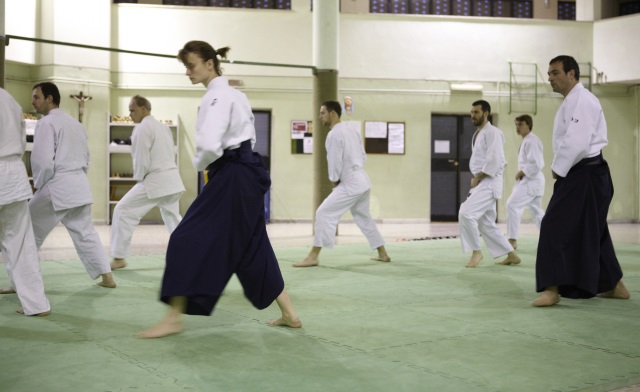
Hmm I have sudden doubts about how one does this. then turn into hanmi so the previously rear leg is now the front one. back foot moves up to wher the back foot was. however when we use the expression kaiten we are refureing to a 90 degree turn soukumen front foot move wide. Tai sabaki () is a term from Japanese martial arts and which relates to whole body movement, or repositioning. Kaiten ashi i seem to remember being in Kisshomaru Ueshiba's book Aikido.Īs a 180 degree turn Maybe a reverse tenkan ie turning on the back foot? I've also heard the word "Suriashi" or "Shuriashi" (I'm not sure which one is the correct one) Tsugiashi is a "small" step, you don't change the hanmi stance while making "tsugi-ashi"

Okuriashi is a "side" step - you make two steps, not changing the hanmi To contribute to the development of culture Īnd to promote peace and prosperity among all peoples.Ayumiashi is a "normal" step, for example you advance from hidarihanmi to migihanmi

To hold in esteem human courtesy and honor.Īnd to forever pursue the cultivation of oneself. To strive for improvement in the art of Kendo. In this beautifully shot two-volume DVD collection, Imaizumi Shihan offers his personal framework for getting back to. To have good ashi-sabaki, you must develop strong legs and feet. To cultivate a vigorous spirit and through correct and rigid training, Actually in Japanese ashi means leg as well as foot, so we could say its called 'leg-and-footwork'.

These are, in order of increasing difficulty, ayumi-ashi, okuri. Ayumi-Ashi : Ayumi-ashi is used to move long distances either backwards. There are four basic types of ashi-sabaki, or footwork, in the Japanese sport of Kendo.

Strike directed at the attacker for purposes of unbalancing or distracting. Ashi-Sabaki refers to the movements of the feet to strike the opponent or avoid attacks. These same basic fundamentals will be practiced throughout the kendo student's life. pivot (tenkai-ashi), forward-step pivot (kaiten-ashi), pivot backstep (tenkan-ashi). They will learn suburi (swinging the shinai properly), ashi-sabaki (proper footwork) and other fundamentals before donning the bogu. It is most simply explained as a form of Japanese fencing, with kendoka (practitioners) using bamboo swords (shinai) and bogu (protective armor) to practice with each other with safety and harmony.īeginners, however will not practice in bogu for their first few months. Kendo is a Japanese Martial Art that is the most-widely practiced in Japan by nearly all school children, high schoolers, university students and teachers, Japanese police, municipal workers, as well as many other professions by both men and women, and is rapidly gaining popularity worldwide for its beauty, respect, as well as its physical and spiritual benefits for its students.


 0 kommentar(er)
0 kommentar(er)
